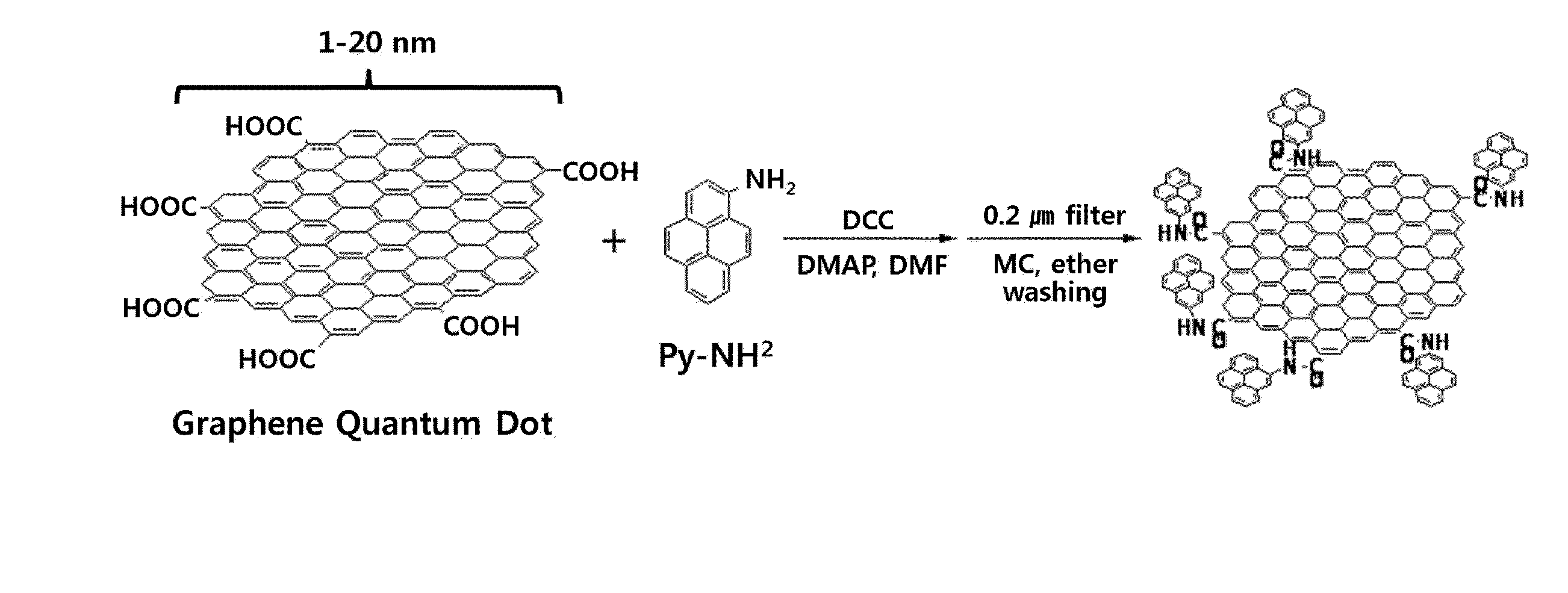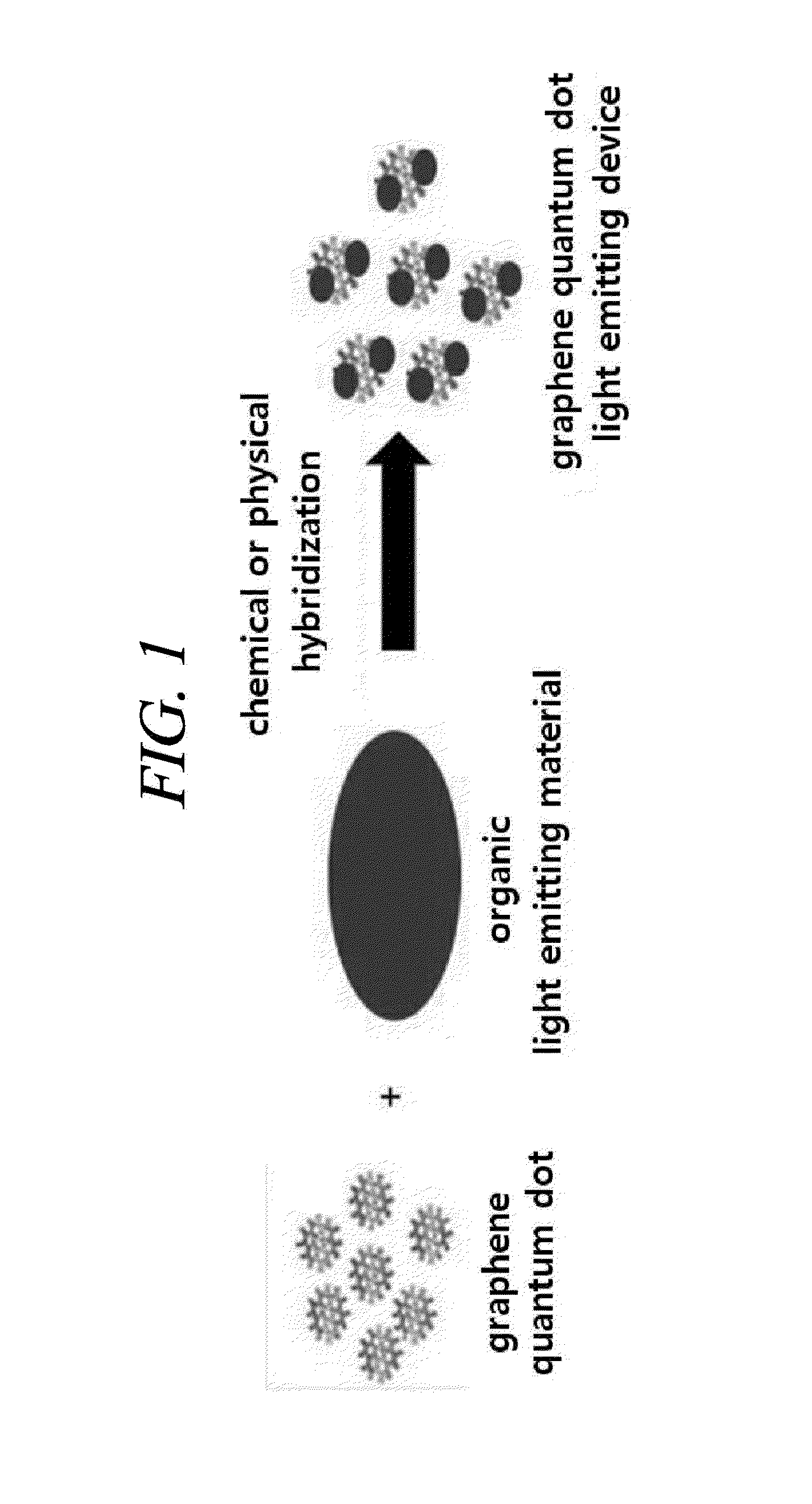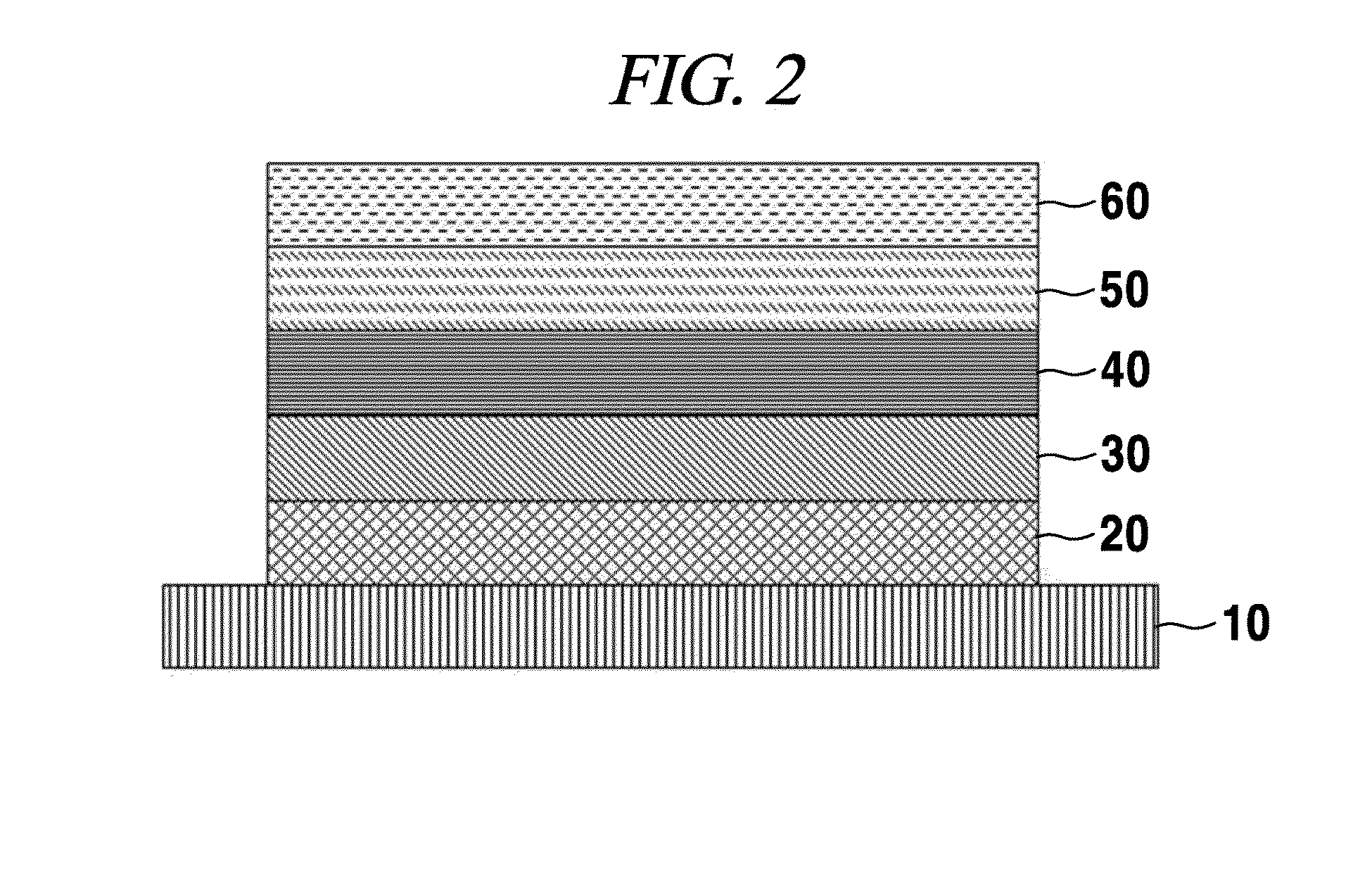Light emitting device using graphene quantum dot and organic light emitting device including the same
a light emitting device and graphene technology, applied in the direction of semiconductor devices, electrical devices, nanotechnology, etc., can solve the problems of reducing the efficiency of the device in realizing the device, reducing the efficiency of the device, and low light emitting efficiency of the conventional light emitting device using a graphene quantum dot. achieve the effect of superior light emitting, light emitting efficiency, and easy dispersion
- Summary
- Abstract
- Description
- Claims
- Application Information
AI Technical Summary
Benefits of technology
Problems solved by technology
Method used
Image
Examples
preparation examples
[0066]A process for preparing a graphene quantum dot used in an example of the present disclosure is described hereinafter. About 5 g of graphene oxide prepared by a modified Hummers method was added to 1 L (5 mg / 1 mL) of dimethylformamide and subject to sonication for one day. The graphene oxide solution, which has not been sufficiently dispersed, was further dispersed by using an ultrasonication (750 W, 2 h). 70 mL of the dispersed graphene oxide solution was moved into a 100 mL Teflon vessel, and then, reacted in a solvothermal reaction device at about 200° C. for about 20 hours. After the reaction finished, the solution was distillated in vacuum to remove the solvent (dimethylformamide). Thereafter, the graphene quantum dot was purified through column chromatography. For eluents, a methanol dichloromethan mixture solution was used as a first eluent, and distilled water was used as a second eluent. Once each of the eluents was collected and distillated in vacuum to remove the sol...
example 1
[0068]A process for forming covalent bond of the graphene quantum dot and the organic light emitting material was performed as follows. The processes were same except that a different type of a light emitting material was used. 100 mg of the prepared graphene quantum dot, 200 mg of 1-aminopyrene, 200 mg of N,N′-dicyclohexylcarboimide (DCC), and 50 mg of 4-dimethylaminopyridine (DMAP) were dispersed in 100 mL of N,N′-dimethylformamide (DMF). The solution was fully stirred at a room temperature or 80° C. for at least 12 or 20 hours, and then, distillated in vacuum to remove the solvent. In order to remove an excessive amount of aminopyrene, 100 mL of methylenechloride (MC) was added thereto and fully stirred. Thereafter, the solution was filtered by using a 200 micrometer membrane filter. After the solid obtained from the filtering was washed several times with methanol and ether, respectively, it was collected and dried in vacuum at 80° C. (refer to FIG. 4).
example 2
[0069]Another process for forming covalent bond of the graphene quantum dot with the organic light emitting material was performed as follows. The processes were same except that a different type of a light emitting material was used. Specifically, 100 mg of the prepared graphene quantum dot was added to 50 mL of DMF and dispersed therein. 100 mL of thionylchloride (SOCl2) was added thereto, and then, stirred at 70° C. for 24 hours. After the reaction finished, the solution was distillated in vacuum to remove DMF and excess thionylchloride. Thereafter, 4 mL of triethylamine (NEt3) and 200 mg of 1-aminopyrene were fully dispersed in 100 mL of N,N′-dimethylformamide (DMF). The solution was fully stirred at 120° C. for 24 hours and distillated in vacuum to remove the solvent. In order to remove an excessive amount of aminopyrene, 100 mL of methylenechloride (MC) was added thereto and stirred. Thereafter, the solution was filtered by using a 200 micrometer membrane filter. The solid obt...
PUM
 Login to View More
Login to View More Abstract
Description
Claims
Application Information
 Login to View More
Login to View More - R&D
- Intellectual Property
- Life Sciences
- Materials
- Tech Scout
- Unparalleled Data Quality
- Higher Quality Content
- 60% Fewer Hallucinations
Browse by: Latest US Patents, China's latest patents, Technical Efficacy Thesaurus, Application Domain, Technology Topic, Popular Technical Reports.
© 2025 PatSnap. All rights reserved.Legal|Privacy policy|Modern Slavery Act Transparency Statement|Sitemap|About US| Contact US: help@patsnap.com



